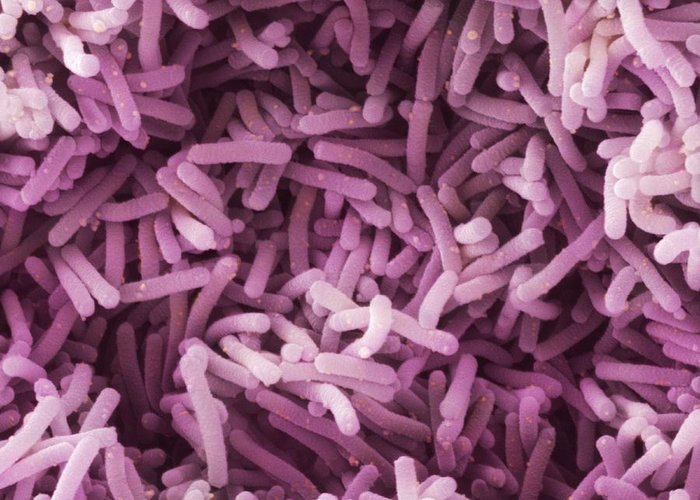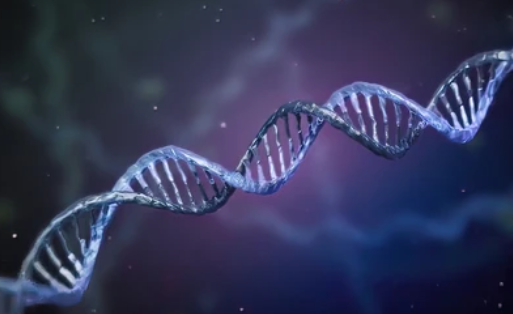Connie: My dear friends, thank you for joining us on this beautiful Saturday evening! In today’s episode, we will be discussing some technical points of recombinant lactic acid bacteria. And joining me in this discussion is our old friend, Dr. Hofstadter. How are you doing today, Dr. Hofstadter. Thanks for being here!
Dr. Hofstadter: I’m doing great. Thanks for having me. Good evening, everyone. It is quite nice to see you again. I’m very excited to be here.
Connie: In the last episode, we talked about the use of genetic engineering to modify probiotics. Although some researchers have reported the role of probiotics in promoting health and fighting diseases, there are still limitations hindering the application of traditional probiotics. Personalized medicine is an advanced method. It takes into account the differences among individuals, including genetics, environment, and lifestyle, and describes the unique and complex disease-specific metabolic pattern of each patient. This futuristic approach is based on routine analysis of the individual microbiome and individual predictive response to different nutrients and therapeutic agents, to create opportunities for the development of new disease-specific treatment strategies. Considering these points, the development of a new generation of lactic acid bacteria and designed probiotics may represent a proper approach in the era of personalized medicine. This can be used to reshape the intestinal microbiome to help improve the target disease. At present, recombinant Lactobacillus is a successful model in this field. What’s your view on this, Dr. Hofstadter?
Dr. Hofstadter: I can think of quite a few developed technologies to improve lactic acid bacteria. According to the current research results, chemically modified lactic acid bacteria have been used to induce single gene restricted mutations, including lactococcal variants for lactose metabolism, citric acid absorption, and proteolytic activity. In addition to chemical modification, the screening method of color selection by X-gal can be used to screen strains lacking galactosidase. More importantly, recombinant DNA technology has been applied to genetic engineering to overcome the problems caused by random mutageneses, such as L. lactis subspecies diacetyl lactic acid to improve the flavor and stability of whey through metabolic engineering.
Connie: Can you give an example that genetic engineering can improve the function of lactic acid bacteria?
Dr. Hofstadter: Of course. A tasteless compound named acetoin is observed in L. lactis that is obtained by decarboxylation of α-acetolactate by α-acetolactate decarboxylase. The gene deciphering α-acetolactate decarboxylase, aldB aggravates the availability of α-acetolactate for chemical oxidation by inactivation.
Connie: But you know, in the process of mutating gene aldB, not all lactic acid bacteria can be mutated evenly. So how can we find the bacteria with gene mutation from normal lactic acid bacteria?
Dr. Hofstadter: An experimental procedure was envisaged to isolate spontaneous aldb mutants from Lactobacillus lactis prototype strains. The purpose is to obtain the advantage of acetyllactic acid flow imbalance between valine synthesis and acetylaminoacid catabolism in the presence of leucine. The mutant strain accumulated a large amount of α- Acetyllactic acid. This contributes to the formation of diacetyl, which remains stable even after long-term storage. The fact is that the use of this strain is feasible in Denmark, but other European countries consider it a genetically modified organism, where its use is blocked.
Connie: That’s unfortunate. In this case, is there any way that can make other countries recognize such strains?
Dr. Hofstadter: Sure there is, Using appropriate heat-sensitive vector and direct allele substitution method to construct similar mutant gene technology. By activating the phage infection protein implied in phage adsorption and DNA injection, this method has been used to obtain phage-resistant lactic acid bacteria from contaminated food.
Connie: To my knowledge, there have been reports of different types of gene systems that initiate the process of probiotic analysis and modification. In particular, these systems emphasized lactic acid bacteria and other microorganisms of industrial interest. Can you introduce the technical points of constructing mutant lactic acid bacteria by allele substitution?
Dr. Hofstadter: Sure. The technology involves three parts: plasmid vector, chromosome modification system, and expression system. Let me go over them one by one. A plasmid vector is a plasmid artificially constructed to adapt to laboratory operation based on the natural plasmid. Compared with natural plasmids, plasmid vectors usually contain one or more selective marker genes, such as antibiotic resistance genes and a synthetic polyclonal site sequence containing multiple restriction endonuclease recognition sites. Except for the first time, most of the non-essential sequences of the plasmid were removed to reduce the molecular weight as much as possible, so as to facilitate the operation of genetic engineering. When it comes to plasmid vectors, interactive plasmids, integration vectors and many selectable markers related to selection and permanence in the host have been used.
Connie: What are the plasmid vectors for recombinant lactic acid bacteria? And what are their characteristics?
Dr. Hofstadter: Those plasmid vectors include pWV01、pVS40、pCI305 and pFR18. Combining natural plasmids with food-grade quality selection markers is their characteristic. In addition, TP901-1 is applied as an interaction plasmid in Lactobacillus lactis. It relies on homologous binding and eliminates part of its replication function by hybridization with non-replicating plasmid.
Connie: I know that genes encoding antibiotic resistance are the most common bacterial selective markers for plasmid vectors. What selective markers will be considered in recombinant lactic acid bacteria?
Dr. Hofstadter: There are two commonly used types of tags. Selectable markers that confer new phenotypes or metal resistance genes, as well as other markers that restore degraded functions required for cell survival. These functions may be inactivated under conditions to produce nutrient-deficient mutations.
Connie: I see. Since the method you mentioned involves allele substitution, I guess chromosome modification is a very key step.
Dr. Hofstadter: You are right. The process of allele replacement on chromosomes is a natural fact. Because it allows genetic modification without leaving unnecessary exogenous DNA, and it is better than a simple cross integration vector. This process can be achieved by modifying the surrounding two homologous regions. For example, double hybridization between adjacent regions on the chromosome of Streptococcus pneumoniae can be observed as allele substitution and Bacillus subtilis. Therefore, a plasmid-based temperature-sensitive system has been developed.
Connie: What steps does the system allow for gene replacement?
Dr. Hofstadter: There are mainly two steps. The first one is to identify the mutation of the gene encoding plasmid replication protein pwv01. This mutation allowed the plasmid to remain at 30.8℃ instead of 37.8℃. And the second step is to isolate the plasmid by growing at 37.8℃ for several generations. It follows replication blocking, which may ensure the safety of thermosensitive particle carriers containing selective type markers. The plasmid can be used to screen food-grade mutants. These mutants include a single insertion element as a new DNA fragment in the genome.
Connie: Interesting. So we have talked about the plasmid vector and chromosome modification system. What does the expression system include?
Dr. Hofstadter: Gene expression systems allow the regulated expression of homologous or heterologous genes and have been noted to develop in Lactococcus lactis. Each lactic acid bacteria has also established a dose-based induction system and a sugar-dependent expression system. The inducible system needs appropriate treatment, especially when the production level required for metabolic control needs to be kept constant.
Connie: Thank you, Dr. Hofstadter. That was a very informative discussion. I hope everyone enjoyed it as much as I did. Thanks for listening today. We will continue our discussions at the same time next week. See you then!
Dr. Hofstadter: Thanks, everyone. I hope we will see you next time.
